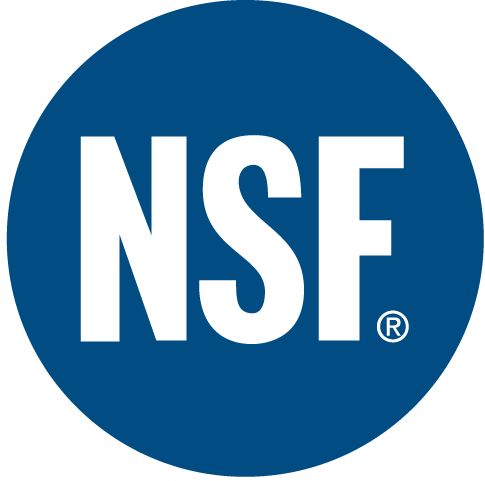NSF International, an independent global organization that writes public health standards and certifies products for food, water and consumer goods, has qualified the first wallcoverings distributor to the American National Standard for Sustainable Wallcoverings – NSF/ANSI 342.
NSF International developed the standard for Sustainable Wallcoverings to help architects, designers, retailers and consumers identify sustainable and environmentally preferable wallcoverings.
NSF/ANSI 342: Sustainability Assessment for Wallcovering Products recognizes the important role distributors play in maintaining the sustainability of wallcovering products throughout their life cycle. In order to qualify and distribute certified sustainable wallcoverings, distributors must demonstrate that they follow environmentally preferable practices. This includes a comprehensive and independent NSF assessment that evaluates the environmental and social impacts of their operations.
TRI-KES, a Dallas-based sustainable commercial interior finishes distributor, is the first distributor to earn qualification under the Sustainable Wallcoverings standard. TRI-KES is qualified at the highest level and may now distribute all levels of certified wallcoverings, including Platinum.
The standard employs an easy-to-use point system to evaluate wallcovering products against performance criteria across the entire product life cycle and quantifiable metrics. Products covered by the standard include textiles, vinyl, vinyl coated, alternative polymer, alternative polymer coated, paper and other natural fiber products. NSF Certification is based on point totals from both the manufacturer and distributor to achieve a Conformant, Silver, Gold or Platinum level. BD+C
Related Stories
| Sep 24, 2014
Must see: Semi-submerged hotel planned for Qatar's man-made island
Plans for a new hotel in the Persian Gulf are taking Dubai’s Palm Islands concept to a whole new level—underwater, that is.
| Sep 24, 2014
5 business lessons from a 43-year Star veteran
Mary Ed Cain was supposed to be born a boy. That was the first time she surprised everyone. The second time came on a daily basis during her 43-year career at Star Building Systems. SPONSORED CONTENT
| Sep 24, 2014
Architecture billings see continued strength, led by institutional sector
On the heels of recording its strongest pace of growth since 2007, there continues to be an increasing level of demand for design services signaled in the latest Architecture Billings Index.
| Sep 24, 2014
Frank Gehry's first building in Latin America will host grand opening on Oct. 2
Gehry's design for the Biomuseo, or Museum of Biodiversity, draws inspiration from the site's natural and cultural surroundings, including local Panamaian tin roofs.
| Sep 23, 2014
Cedars-Sinai looks to streamline trauma care with first-of-its-kind OR360 simulation space
The breakthrough simulation center features moveable walls and a modular ceiling grid that allow doctors and military personnel to easily reconfigure the shape and size of the space.
| Sep 23, 2014
Third phase of New York’s High Line redevelopment opens
The $35 million Phase 3, known as High Line at the Rail Yards, broke ground September 20, 2012, and officially opened to the public on September 21.
| Sep 23, 2014
Cloud-shaped skyscraper complex wins Shenzhen Bay Super City design competition
Forget the cubist, clinical, glass and concrete jungle of today's financial districts. Shenzhen's new plan features a complex of cloud-shaped skyscrapers connected to one another with sloping bridges.
| Sep 23, 2014
Designing with Water: Report analyzes ways coastal cities can cope with flooding
The report contains 12 case studies of cities around the world that have applied advanced flood management techniques.
| Sep 22, 2014
4 keys to effective post-occupancy evaluations
Perkins+Will's Janice Barnes covers the four steps that designers should take to create POEs that provide design direction and measure design effectiveness.
| Sep 22, 2014
NCARB overhauls Intern Development Program, cuts years off licensure process
The newly adopted changes will be implemented in two phases. The first will streamline the program by focusing on the IDP’s core requirements and removing its elective requirements. The second phase will condense the 17 current experience areas into six practice-based categories.















